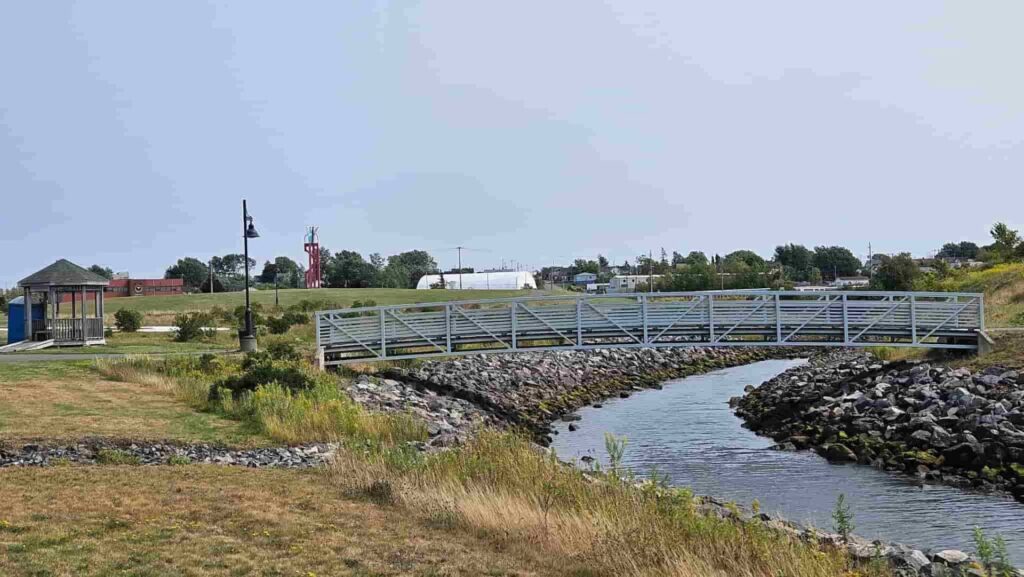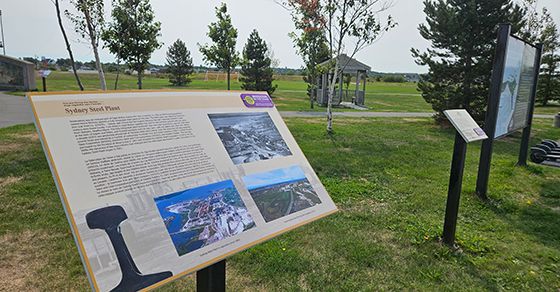Did you know that over 23,000 federally recognized contaminated sites exist in Canada? Many are the results of decades of industrial activity, aging infrastructure, and poor waste practices.
Canada is not exempt from the growing global pressure to clean up polluted land. Already, the federal government has launched the Federal Contaminated Site Action Plan (FCSAP) Phase V (2025-30) to accelerate action. The goal is to reduce health and environmental risks, restore land use, and support environmental cleanup across the country.
Site remediation and reclamation remain the most effective tools for addressing these challenges. By removing, treating, or stabilizing contaminants in soil, sediment, and water, remediation turns liabilities into safe, usable land.
But timing is critical. Delaying action doesn’t just raise costs—it compounds risks. Left unmanaged, contamination worsens, regulatory pressure increases, and reputational damage grows. Early remediation, on the other hand, creates opportunities.
In this post, we’ll cover the five key benefits of proper remediation and reclamation—why it matters for businesses, communities, and Canada’s long-term environmental future.
The High Cost of Doing Nothing
Ignoring contamination doesn’t make it disappear—it compounds over time, becoming more difficult and expensive to address. Under Canadian law, environmental liability is cradle to grave. That means a property owner cannot simply sell the land and walk away from contamination; responsibility follows the site for life.
Unremediated land faces increasing regulatory pressure:
- Under the revised Canadian Environmental Protection Act (CEPA), new toxic substances are now tracked, including per- and polyfluoroalkyl substances (PFAS).
- Site owners face steep fines, delayed project approvals, and denied permits. Insurance premiums also increase, as do long-term monitoring and legal costs.
- Digital corporate social responsibility (CSR) and ESG reporting now digital and public, investors, regulators, and communities quickly lose trust when liabilities are ignored.
Poor hazardous waste management today doesn’t just create reputational damage—it creates long-term financial and legal obligations that cannot be passed on or avoided. The only way to lower that risk is early, proactive site remediation before liabilities spiral out of control.
The 5 Strategic Benefits of Proper Site Remediation and Reclamation
Proper cleanup is a smart business decision. When done right, it protects people, improves timelines, and restores land value. Below are five strategic ways that site remediation creates lasting benefits (both financially and operationally):
1. Regular compliance and risk mitigation
Environmental rules are getting tighter across Canada. From the FCSAP to British Columbia’s updated Contaminated Sites Regulation (CSR), timelines and requirements are becoming more defined.
Standard site remediation helps organizations meet standards early. It simplifies approvals, avoids delays, and reduces the risk of penalties, shutdowns, and failed audits.
Expert environmental cleanup also supports pollution control goals while showing a clear intent to comply. In the eyes of regulators, early actions build trust and protect reputation.
2. Unlocking redevelopment and asset value
Contaminated land holds no value until it is cleaned. Developers won’t touch it because cities won’t use it. However, with contaminated site cleanup, that land can become an opportunity. Remediation removes the risk, thus making way for safe and high-value redevelopment.
Dockside Green in Victoria is a strong example. The 15-acre brownfield sat unused for years. A site remediation operation was done at an estimated $12 million before a mixed-use, LEED-rated neighbourhood was established.
In essence, good environmental cleanup fixes pollution and transforms dead space into livable, profitable, and sustainable property.
3. Protecting human health and the ecosystem
Lack of pollution control does more than damage land; it poisons food chains and harms people and wildlife. One of the biggest concerns today is PFAS: per- and polyfluoroalkyl substances. These manufactured chemicals don’t break down easily—they can stay in the soil or water for decades.
According to a Health Canada and Environmental and Climate Change Canada (ECCC) report, PFAS exposure is linked to health complications. This includes hormone disruption, cancer risk, and developmental issues in children.
Interestingly, a Canadian research study showed that site remediation solutions like soil-washing removed over 99% of PFAS from test sites. This goes a long way in protecting public health and restoring polluted land to life.
4. Improves ESG profiles and community trust
Environmental, social, and governance (ESG) scores now shape reputation and access to funding. Governments, banks, and capital markets are watching closely and always look out for proof of action.
For mining and oil, and gas clients, these visible efforts matter. When investment is made in site remediation and emissions and land are managed properly, investors’ and shareholders’ trust increases. Hazardous site management is far from simply compliance—it is credibility.
5. Long-term cost-efficiency
Cleaning up the hazard after it spreads is very expensive, as it sometimes entails emergency excavation, legal action, and long-term groundwater monitoring.
However, when contaminated site cleanup is done early, the costs drop. The work is smaller, more controlled, and easier to manage. Proactive hazardous site management also prevents future problems, reduces the chance of fines, cuts the need for constant monitoring, and protects your budget.
Case Study: Sydney Tar Ponds
The Sydney Tar Ponds in Nova Scotia were once known as one of Canada’s most toxic industrial sites. For nearly a century, waste from steel mills and coke ovens flowed into Muggah Creek, leaving behind a thick, contaminated sludge.

The site covered over 84 hectares and held more than 560,000 tons of toxic material, including heavy metals, PAHs, and oil-based residues.
In 2004, a C$400 million environmental cleanup plan was launched, jointly funded by the federal and Nova Scotia governments. Over the following decade, the site was fully transformed using a mix of advanced technologies. Crews stabilized the sludge in place using cement, locking toxins into the soil—an example of hazardous site management on a national scale.
KBL’s Projects Division (prior to being acquired by KBL) played a key role in this massive remediation effort. The experience and expertise gained through this project continue to inform our approach to large, complex contaminated site cleanups across Canada.

Today, the area is known as Open Hearth Park, a public space with sports fields, walking trails, and event grounds. This successful remediation demonstrates what is possible when long-term vision, technical expertise, and strong partnerships come together.
Businesses Must Act Now
Environmental risks can no longer be postponed. FCSAP Phase V (2025–2030) is underway, with a focus on Canada’s highest-risk sites. At the same time, tightening contaminated sites regulations are reshaping how liabilities are assessed, managed, and closed.
Investors are demanding ESG alignment. Municipal and Indigenous planning boards are requiring remediation strategies before development can proceed. Communities are holding companies accountable.
The message is clear: effective remediation and pollution control are no longer optional—they are the starting line. Businesses that delay risk falling behind in compliance, credibility, and competitiveness.
Solutions That Restore and Reclaim Is Our Value Proposition
Restoring damaged land is more about rebuilding value and trust, rather than just meeting regulations. It also entails making land safe, functional, and future-ready.
KBL helps clients across Western and Northern Canada do exactly that. We deliver expert site remediation that:
- Clears environmental and financial risk
- Unlocks redevelopment opportunities
- Meets the strictest regulatory standards
Our strength lies in precision, planning, and collaboration. We navigate complex regulations—territorial CSR frameworks, federal guidelines, and FCSAP funding protocols—with confidence. We also engage closely with Indigenous stakeholders to ensure outcomes that are inclusive and respectful.
Because every site is unique, our toolbox includes proven solutions such as soil washing, bioremediation, mobile water treatment, sediment control, and more. Our integrated contaminated site cleanup services include:
- Site assessments and environmental testing
- Subsurface investigations and toxicology reporting
- In-situ and ex-situ remediation of soil and groundwater
- Infrastructure removal and bulk soil excavation
- Seeding, erosion control, and ecological restoration
Partner With Us
KBL Environmental is committed to supporting every step of the remediation journey. With a proven track record and deep technical expertise, we help transform environmental liabilities into sustainable opportunities.
Reach out to us at 780-452-7779, or contact us online to speak to a site remediation expert, and start building a solution.

